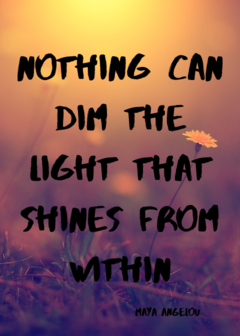American Ginseng for Heart Health
Page 1 of 1
 American Ginseng for Heart Health
American Ginseng for Heart Health

Herb Profile: American Ginseng
Panax quinquefolius
Portrait
A hardy perennial, about 38cm (15in) tall, with a cigar-shaped, often branched, aromatic rootstock, and leaves divided into five (occasionally three or seven) toothed, oblong, pointed leaflets, the largest reaching 15cm (6in) long. Tiny greenish-white flowers appear in a cluster above the whorl of leaves in early summer, followed by a bright red, raspberry-like fruit. American ginseng is native to eastern North American woodlands. Its equivalent in Asia in P. ginseng, which grows wild in north-eastern China and is extensively cultivated, notably in Korea.
History
The use of ginseng in China goes back some 5,000 years and by the twelfth century there were already shortages due to over-collection. The first descriptions of P. ginseng in the wild were published in 1714 by Father Jartoux, a Jesuit missionary. He observed that forested mountains on the Korean border were so like those in Canada that a similar species must surely grow there — an observation that prompted Father Lafitau, a Jesuit priest in Canada, to search for the plant, which he eventually found in 1716. (Millions of years ago, North America was connected to Asia, which explains why the two continents, though now distantly separated, still have some closely related species.) His discovery initiated the thriving export trade of American ginseng to China that continues to this day. In turn, American ginseng has become increasingly scarce in the wild, leading to legislation restricting its collection, and new initiatives to cultivate this valuable herb, both in North America and Europe.
Cooking
Ginseng roots and extracts are an ingredient of tonic soups, teas, soft drinks, chewing gum and liqueurs. In Asia they are often eaten raw, deep-fried or candied as snacks or toppings, or as ingredients for salads and stuffings.
Healing
American ginseng is a tonic herb that increases resistance to infection and stress, improves stamina and concentration, lowers blood sugar and cholesterol levels, and strengthens the nervous system. It is usually taken for short periods as a tonic during winter or a period of undue stress, and is often very beneficial for debility in old age or during convalescence. Though similar in effects to P. ginseng, American ginseng is considered better for younger people, whereas P. ginseng is more often prescribed by Chinese herbalists to those over 40 years of age. Ginseng is unsuitable for pregnant women or anyone with a high intake of caffeine. Side effects, such as headaches, restlessness and raised blood pressure, may also occur when ginseng is taken in excess or in conjunction with alcohol, turnips or spicy foods. Externally, in ointment, ginseng helps to heal minor injuries and skin problems.
Notes for Gardeners
Ginseng needs woodland conditions — dappled shade, cool, humus-rich, acid soil and moderate warmth, moisture and humidity throughout the growing season. Natural deciduous woodland offers the best chance of success. Short of that, construct raised beds of rich, well-drained soil, with supports for a shade screen in summer. Propagation by seed is challenging. Seed must not be allowed to dry out and should be stratified before planting. Even then, it takes between six and twenty months to germinate. Young plants are also available from specialist nurseries. Outside its natural habitat, ginseng is difficult to grow with any degree of success for any length of time — particularly in pots. Given good growing conditions, roots are ready for harvesting after five or six years.
Read more: http://www.motherearthnews.com/natural-health/american-ginseng-for-heart-health-ze0z1406zhou.aspx#ixzz3527l8Gdz
 Similar topics
Similar topics» Health Benefits of Mint Tea
» What Does FDA-Approved GMO Salmon Mean for Our Health?
» Can smiling improve your health?
» The 5,000 Year Old Buddhist Health Recipe
» Boost Your Brain Health Naturally
» What Does FDA-Approved GMO Salmon Mean for Our Health?
» Can smiling improve your health?
» The 5,000 Year Old Buddhist Health Recipe
» Boost Your Brain Health Naturally
Page 1 of 1
Permissions in this forum:
You cannot reply to topics in this forum

» Crypto Price Crash: As Bitcoin And Ethereum Collapse, Elon Musk Brands Radical Dogecoin Plan A ‘Great Idea’
» Co-Impact Sourcing - Rose
» Co-Impact Sourcing - Lemon
» Doterra's Co-Impact Sourcing, The Doterra Difference
» How to Build a Firepit
» How To Make Bar Soap Yourself
» How to Grow Blueberries
» Bring On the Cheer
» Natural Homemade Plant Fungicide Works A Treat
» The Best Lemon Impossible Pie Recipe
» How To Make A Rainbow Unicorn Cheesecake
» How To Tint Jars And Bottles The Easiest Way
» Low Light Loving Plants You Can Grow Anywhere
» 11 Natural Ways to Reduce Symptoms of Menopause
» ONE DRAGONFLY CAN EAT HUNDREDS OF MOSQUITOS A DAY. KEEP THESE PLANTS IN YOUR YARD TO ATTRACT DRAGONFLIES
» Positive Things To Say To Your Child
» Aluminum Foil And Baking Soda Jewelry Cleaner
» How To Repot Orchids The Correct Way at Home
» Fill Your Garden With Butterflies